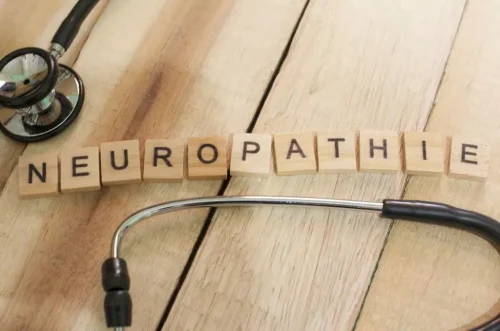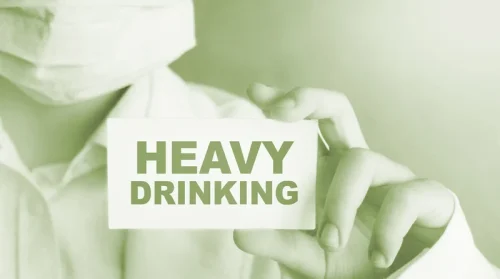This includes clothing that depicts a message in either text or art that could influence the safety and security of the residents and the facility. All visitors need to be at least 18 years old and show proper identification. Minors are permitted to visit the halfway house as long as they are accompanied by an adult (either a parent or a guardian). https://ecosoberhouse.com/ Amanda Stevens is a highly respected figure in the field of medical content writing, with a specific focus on eating disorders and addiction treatment. Amanda earned a Bachelor of Science degree in Social Work from Purdue University, graduating Magna Cum Laude, which serves as a strong educational foundation for her contributions.
What Happens When Someone Completes a Program at a Halfway House?
Rather than housing people in the throes of addiction, sober living homes provide a space for people seeking to establish a new trajectory for their lives, which includes a practical application to sobriety. The gruesome portrayal of halfway houses in the media can often be the catalyst for formal audits of these facilities. But it should be noted that regular monitoring, auditing, and data reporting should be the norm in the first place. Halfway houses are just as much a part of someone’s prison sentence as incarceration itself, but they are subject to much less scrutiny than prisons and jails. This lack of guidelines and oversight has ensured that people in halfway houses are not being aided in safely and effectively rebuilding their lives after serving time in jails and prisons.
- Alcohol, drugs, and related paraphernalia are prohibited inside the home.
- Recovery residences, more commonly known as sober living homes, are dedicated to helping people re-enter society after receivingtreatment for alcohol or drug addiction.
- Living in a communal environment with others struggling with addiction or other mental health issues can sometimes be triggering.
- Think of sober living as your support net as you practice new skills, gain new insight and shape your new life in recovery with other people who are possibly facing the same challenges.
- Too often, audits are only conducted after journalists report on the ways specific halfway houses are failing residents, rather than government correctional agencies doing proper oversight on their own.
The Purpose of Halfway Houses
- Since sober living typically follows addiction treatment, getting a referral from the treatment provider is recommended.
- It offers a structured and supportive environment for persons who have left rehab, penal or correctional facility, or the streets as homeless persons to continue their journey toward recovery.
- While you’re in rehab, your treatment team is working to make sure you have the skills you need to be successful once you leave.
- These facilities work with corrections departments to house individuals leaving incarceration, often as a condition of parole or other post-release supervision or housing plan.
- Staff may include professionals trained in addiction counseling or security personnel that ensures residents are complying with the rules and regulations of the home.
Moreover, there is a limit on the number of visitors a resident is allowed to have at a given facility. In most houses, visitors need to be approved by the staff in advance, so calling ahead to set an appointment is imperative. Visitation policies vary per halfway house, so it is advisable to call ahead and inquire about their restrictions before making a visit to a loved one.
Careers – Join Our Team
Some homes have direct accessto clinical services, and others provide referrals to known health providers. Some transitional housing facilities accept credit card payments or offer in-house financing. Generally, the cost of living at a halfway house ranges from $100 to $2,000 per month. Most facilities with basic amenities cost about $400 to $800 per month, depending on their geographic region. Jessica graduated from the University of South Florida (USF) with an English degree and combines her writing expertise and passion for helping others to deliver reliable information to those impacted by addiction. Informed by her personal journey to recovery and support of loved ones in sobriety, Jessica’s empathetic and authentic approach resonates deeply with the Addiction Help community.
Part of living in recovery is « showing up for life, » meaning doing things for yourself that make you a successful, contributing member of society. When in active addiction, we tend to ignore the things that make us successful. So when getting back on our feet and in recovery, cooking and cleaning for ourselves is part of a healthy recovery plan. Let’s say you or a loved one has almost completed an alcohol or other drug addiction treatment program.
- The focus of the facility may vary depending on the needs of the population being served.
- The differences between halfway houses and sober living homes depend on the specific facilities.
- Some halfway houses accept insurance, but it’s up to your insurance company to determine how much is covered and if you’ll need to pay a co-pay.
- 🏆 If you are passionate about helping individuals in recovery and making a positive impact in your community, consider partnering with Keith Humes and opening up a halfway house.
- Funding disruptions could occur at any time, depending on budget cuts for whichever entity owns the house.
- A halfway house, sometimes known as a sober-living home, is a home-like facility where recovering addicts live and receive staff supervision.
State-licensed halfway houses can be referred to by a variety of terms, like Transitional Centers, Reentry Centers, Community Recovery Centers, etc. These facilities work with corrections departments to house individuals leaving incarceration, often as a condition of parole or other post-release supervision or housing plan. A halfway house entails a crucial step in your drug rehab, providing support when you need it most. Many people fall into addiction because they lack structure and may not have had to face the consequences of their actions. The term halfway house has beenstigmatized because of its association withprisoners and people who have a history of drug use. Organizations may use other terms in lieu of halfway housesto avoid stigmatizing residents.
What Happens if Someone Violates Halfway House Rules?
There are tools, like halfway houses, that can help people recover for life. With regard to substance abuse, it’s a transitional home between treatment and everyday life. These staffed facilities provide a sober environment and the guidance of house rules, which can help residents stay on track. You might also see the term “sober living facility,” although there’s a slight difference what is a halfway house between the terms. A halfway house, also known as a “sober living house” in some states, is a transitional living facility for those in recovery from drugs or alcohol. Some people go to a halfway house after leaving a long-term addiction treatment center, prison or a homeless situation, while others go to be in a sober living environment as they begin their journey to recovery.
Living in a halfway house can be a great bridge between finishing your rehab program and returning to your regular life. A halfway house will give you more time to transition, but it also provides a robust support system of sober peers to encourage you. Halfway houses are less disciplined than inpatient rehab centers but slightly more regulated than sober homes. If you or your loved one feels the need to continue living in a sober community environment after your stay at a halfway home, look into sober living houses. A halfway house is an institute for people with criminal backgrounds or substance use problems to learn (or relearn) the necessary skills to re-integrate into society and better support and care for themselves.
Contemporary halfway houses
Look for a facility that offers structure and support both inside and outside the house, with rules that set boundaries you can live with and offer accountability when you break them. Sober living homes generally don’t have time limits, so residents can stay until they feel confident enough to move on. The typical length of stay depends on many factors, including the stability of a resident’s physical and mental health, their ability to support themselves, and the support available at home. Many people use the terms “halfway house” and “sober living house” interchangeably. When referring to substance abuse recovery, there are some key differences.
Support for Me and My Family
From states like Minnesota, we are able to see that the carceral conditions in federal RRCs are often mirrored in the state system. Once you finish the hard work of detox and in-patient addiction treatment, you may feel nervous and maybe even fearful about how you will stay sober when you’re on your own. You may be like many addicts who think they can’t handle sobriety because it’s boring. But you won’t have to be alone in this with options for sober living at a halfway house at your disposal. Sober living arrangements are designed for those who need more support in their recovery than is available at their own homes. Those who are actively in recovery as well as those who have completed a rehabilitation program and are nearing readiness to re-enter the community stay at halfway houses.





